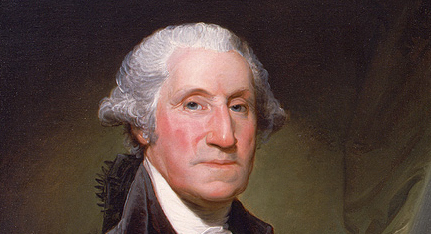The hidden history of the conspiracy to kill General George Washington brought to light
In April 1776, General George Washington, age 44, was the newly appointed Commander-in-Chief of the Continental Army. His forces, about 25,000 in number, were made up of mostly untrained and undisciplined recruits with “a few veteran soldiers…and a lack of gunpowder.”
Washington wrote to his brother, Augustine, that his army existed mostly on paper. “Within weeks,” he continued, “the British will be here. We expect a bloody summer…We are not prepared.”
Washington had landed in Manhattan, to whip his small army into shape. There was no Navy. Washington had traveled down from Boston with a plan to fortify Manhattan prior to the invasion.
The British were headed to New York, too, but from Halifax, Canada. Their purpose was to teach the rebels a hard lesson: Rebellion against the Crown is a capital offense. And soon, if the Crown’s mighty and feared dragoons prevailed, the rebels would be paying that price.
With 400 ships and 34,000 seasoned troops, including German auxiliaries, the British had one of the largest military forces of that bygone era.
It would be the first major battle of the American Revolution. The British military leaders were the Howe brothers: William, Army; and Adm. Richard Howe, Navy, both veterans of prior British colonial wars.
New York’s then-governor, a fanatical Tory, William Tryon, had left New York City. Fearing being kidnapped or hanged, he gained refuge on a British vessel, “Duchess of Gordon,” in Cold Spring Harbor, Long Island. It was docked, for protection, next to a British warship, “Asia,” with her 64 guns.
Tryon’s rap sheet as a Brit thug-for-hire included his employment, by the Crown, as the colonial governor (read autocrat) of North Carolina. There in June of 1771, farmers had protested against the “oppressive taxes” imposed on their properties.
When they refused to obey Tryon’s arbitrary decrees, his army of mercenaries, attacked the farmers. Six of their gallant leaders were tried and hanged after being (gasp) drawn and quartered.
This is basically how the authors Brad Meltzer and Josh Mensch set the stage for their compelling insight into a little known chapter in the saga of America’s finest son, George Washington. It’s called “The First Conspiracy: The Secret Plot to Kill George Washington.” Although we know the plot didn’t work, still the authors’ narrative keeps our attention.
On his own, the cunning Tryon established a spy network, centered in Manhattan, to keep an eye on Washington and his boy-ohs and maybe do something even more sinister! The network included the general’s own housekeeper!
Also included in this treasonous cabal are some disaffected Continental solders; local merchants; a gunsmith, Gilbert Forbes; the former Mayor of New York City, David Mathews; a sloop owner, Thomas Vernon; a clique of counterfeiters; and other assorted characters of low repute, such as James Mason, William Benjamin and William Farley. After taking an oath to the Crown, they received money and a “promise of land,” for their treachery.
 Meanwhile, it became known to Washington, that Dr. Benjamin Church, a supposedly staunch patriot, from Massachusetts, had gone over to the dark side and had secretly embraced the Loyalist side. Soon, credible reports emerged of a plot or plots to kidnap and/or kill Washington, once the invasion begins.
Meanwhile, it became known to Washington, that Dr. Benjamin Church, a supposedly staunch patriot, from Massachusetts, had gone over to the dark side and had secretly embraced the Loyalist side. Soon, credible reports emerged of a plot or plots to kidnap and/or kill Washington, once the invasion begins.
Shaken by this news, Washington chose a group of selected soldiers to serve as “his personal Life Guards.” With the permission of the Congress sitting in Philadelphia, three individuals, including John Jay, are appointed to set up a “counterintelligence committee” of nine members. Their job is to uncover any plots against Washington and/or the government and to “stop them.” Think CIA!
Before you can say “Benedict Arnold,” a plot, which included members of Washington’s own “Life Guards,” is exposed! One of them, Thomas Hickey, an ex-British soldier, is singled out to be made an example of by his thirteen-membered court-martial. On June 27, 1776, Hickey is hanged, at a public place, in Manhattan, before 20,000 soldiers and citizens, for the “crimes of Sedition and Mutiny.”
By late June 1776, the Continental Congress had met and passed a draft of the Declaration of Independence, authored mostly by a red-headed delegate from Virginia, Thomas Jefferson. On July 2, 1776, the Declaration passed. It is finalized for good on the 4th of July. The colonies are no longer part of the British Empire but don’t tell that to the Howe brothers. The Revolution had officially begun!
The authors go on to tie up a lot of loose ends. They tell the readers what eventually happened to the co-conspirators, including Governor Tryon and Mayor Mathews. You know the rest of the story.
Here’s what you have to ask yourself: If the plot to kill and/or kidnap Washington had succeeded, would there be an America today? I seriously doubt it. If Washington goes, so goes the dream of an American Republic.
I’m giving “The First Conspiracy” four out of five stars for having skillfully exposed a piece of our country’s history that deserved to be highlighted for our posterity. This book also underscored what a special kind of patriot George Washington was, in the finest tradition of the leaders of the early Roman Republic, such as Lucius Quinctius Cincinnatus, and how fortunate we were to have him as our leader at that critical time in our history.

Bill Hughes is an attorney, author, actor and photographer. His latest book is “Byline Baltimore.” It can be found at: https://www.amazon.com/William-Hughes/e/B00N7MGPXO/ref=dp_byline_cont_book_1

